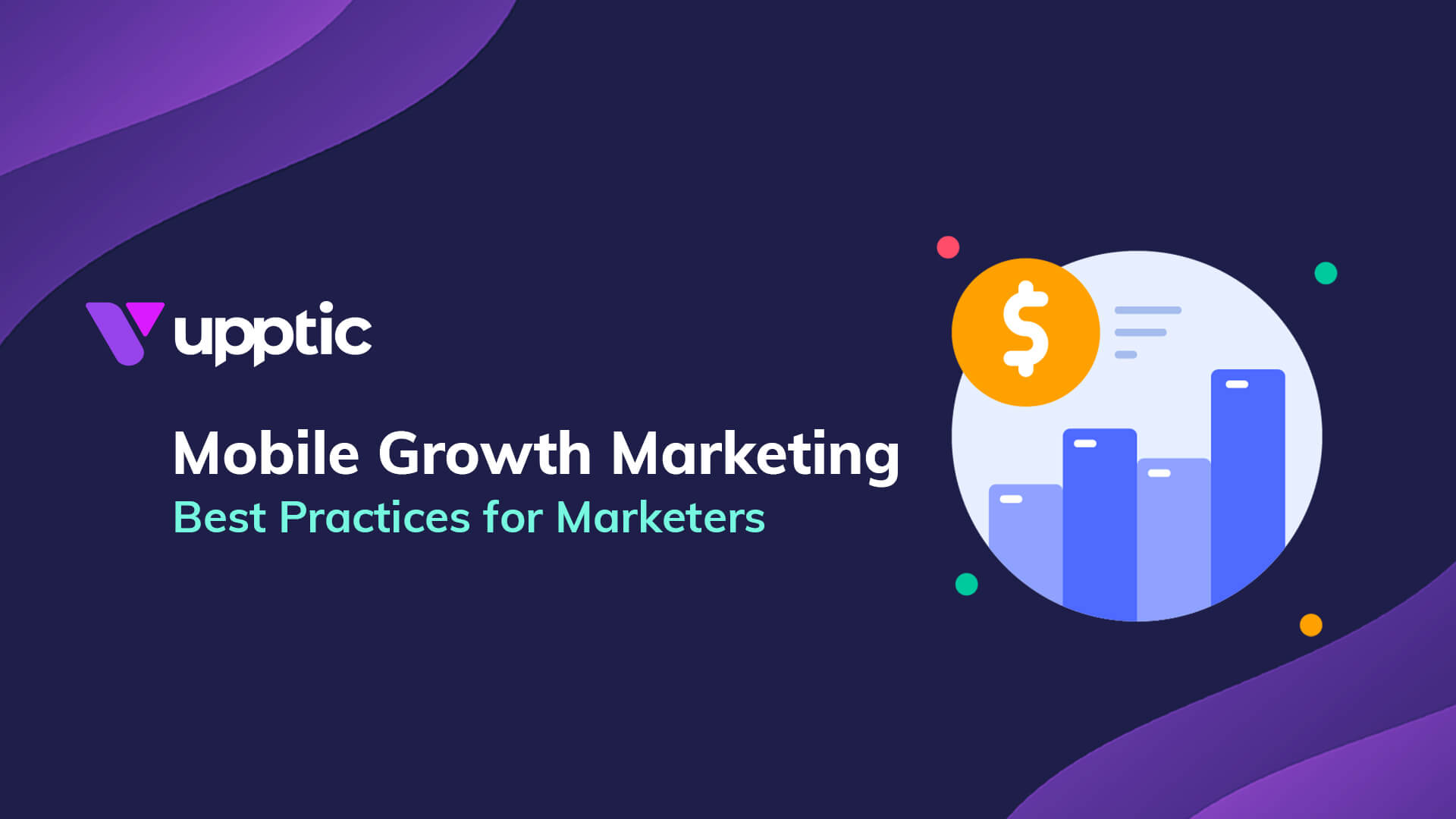The history of mobile games on smartphones is a relatively short one, but it has seen some incredible growth in a short period of time. Mobile games have been around for almost as long as mobile devices themselves, but they really took off when Apple released the App Store in 2008 – which allowed developers to easily create, market, and sell games to mobile users.
Since then, the mobile games industry has exploded – with digital marketing largely usurping traditional marketing as well. While there have been recent signs that the industry is cooling, it is nonetheless a hyper-competitive market with new games regularly added. This atmosphere requires, more than ever, well-thought-out and well-planned app marketing campaigns in order to be successful.
In this post, we will examine the best practices in mobile growth marketing as well as mobile marketing trends. If you are a game publisher, these app growth tactics will help you better take advantage of the most efficient and effective ways to promote your title.
Use the chapter selector below to jump to a chapter.
- The mobile games landscape
- What is growth marketing?
- Growth marketing staples
- Best practices for mobile game marketing
- Key takeaways
The mobile games landscape
The release of the App Store for Apple in 2008 led to a gold rush for game developers, who quickly began creating new and innovative games for the iPhone and Android platforms. Some of the most popular games from this era include Angry Birds, Candy Crush, and Flappy Bird. These games were all simple to play but challenging enough to keep people hooked for hours on end.
In less than a decade, mobile games have surpassed console and PC gaming to become the #1 moneymaker for the games industry. In recent years, the rise of social media has had a major impact on mobile gaming and mobile marketing – which became a necessary replacement for traditional marketing in order to maximize app growth. Games like Pokemon Go and Clash Royale have become incredibly popular thanks to their ability to integrate with platforms like Facebook and Twitter, as well as the social components within the games themselves.
App stores have boomed as well. Alongside Apple’s App Store, there is Google Play on Android, an Amazon app store, and app stores for almost every mobile service provider and phone manufacturer on the planet.
The global mobile gaming market is expected to reach over $116B in 2022 according to ReportLinker’s Mobile Gaming Global Market Report.
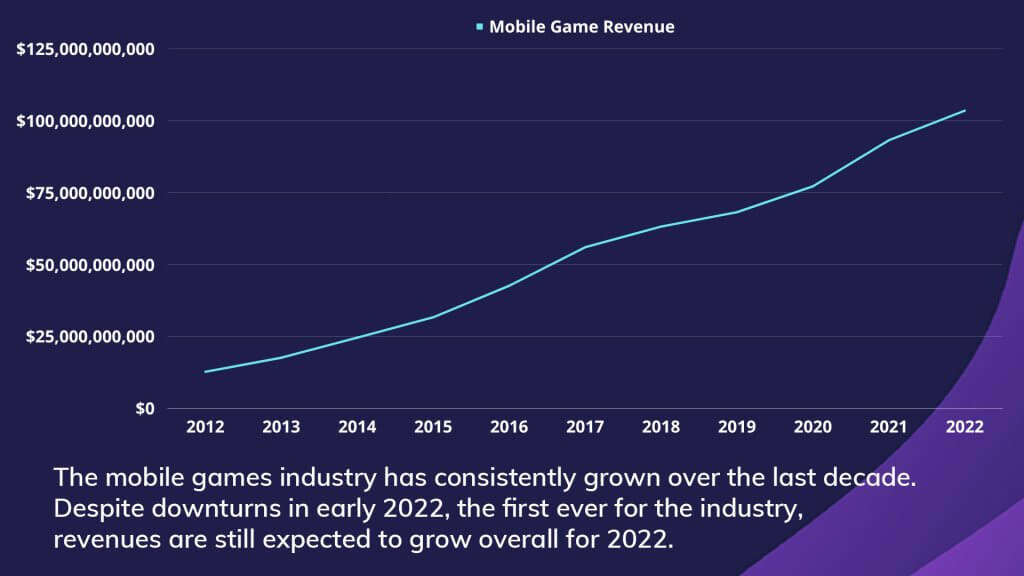
There are a number of factors driving this app growth.
- First, the number of mobile app gamers has increased exponentially in the last decade. There are now over 2.5 billion people playing mobile games globally. The pandemic saw a surge in new mobile gamers as people looked to socialize or entertain themselves online to get through various lockdowns.
- Second, as mobile data networks and smartphone hardware become more advanced, mobile app games continue to grow more sophisticated – offering players richer and more rewarding experiences.
- Third, mobile games have become easier to monetize over the years through growth hacking. In-app purchases and paid transactions have become common in mobile games over the years – and they now generate billions of dollars in revenue for game developers.
Yet all of this optimism is not without a caveat, as the mobile games industry saw its first revenue decline ever in Q1 2022. This is partially due to the same reason the sector saw such explosive growth in the last few years – the pandemic. As life returns to normal and people are able to move out into the world again, the industry is shedding some of the players that it gained during the height of its pandemic growth.
With the market more saturated than ever with games, the need for stellar growth hacking and top-tier app marketing campaigns becomes not only more necessary, but also more expensive. For a growth marketer to cut through the highly competitive market and have their mobile app game stand out without breaking the bank requires diligence and creativity.
Because of this, app marketers in the mobile games industry continue to evolve their growth marketing tactics to ensure growth hacking success.
- Learn more about marketing strategies in the recent App Talk with Upptic podcast episode State of Games Marketing (UA Roundtable) – where Upptic marketers describe the current state of games marketing and how they’re evolving in response.
What is growth marketing?
Surviving in this up-and-down market means understanding the tools and tactics available and executing a marketing plan. A combination of tried-and-true tactics and innovative new ideas is the recipe for repeatable success in marketing your title.
Growth marketing is a dynamic growth strategy to attract, engage, and retain customers. Unlike in traditional marketing, where you have a more “set-and-forget” approach, growth marketing requires a solid knowledge of interpreting analytics and iterating quickly on them to drive results – it’s the epitome of performance marketing.
This involves trying out new ways to better engage with leads and customers from all segments. While the tactics of growth marketers are meant to reach a wider audience, it also focuses on specific demographics to better retain customers. Both user acquisition (UA) and customer retention are important to quickly but sustainably grow your mobile game user base.
Growth marketing staples
Growth marketing strategies vary from company to company – but all growth marketing strategies should include the following staples.
A/B testing
A/B testing is a method of experimentation where two versions of an ad or piece of content are shown to different users at different times. The marketer then evaluates which version performs better and uses that version going forward. This is important in mobile gaming because it allows marketers to test different creatives and messages to see what works best with their target audience. For example, different images or text can be tested against each other to see which resonates with a target customer set.
App store optimization
App store optimization (ASO) is the process of optimizing a mobile game’s app store product page so that it is more visible to potential customers. This includes using the right keywords, having an engaging logo, and maintaining a good rating. User-submitted reviews can cause a game to rise or fall in an app store’s rankings by giving potential players a gamer’s point of view on the game experience. When it comes to app stores, ASO is key to ensuring a customer finds and downloads your game.
- Learn more about ASO in our complete app store optimization guide What Is App Store Optimization? And Why Does It Matter?
Organic user acquisition
Organic user acquisition is the process of acquiring users through means other than paid advertising. This can include techniques such as PR, content marketing, and social media outreach. One of the benefits of organic user acquisition is that it tends to be less expensive than paid advertising. Additionally, it can be more effective in the long run because users who are acquired organically are more likely to be retained and converted into paying customers.
There are a number of different organic user acquisition tactics that marketers can use to acquire new users.
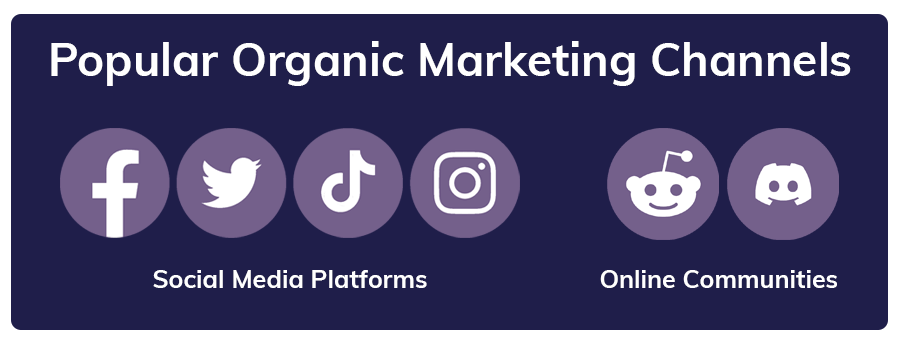
Content marketing
Content marketing involves creating high-quality content that is relevant to your target audience. This content can be in the form of blog posts, infographics, videos, or even podcasts. By creating valuable content, you can attract leads and customers who are interested in what you have to offer. Additionally, content marketing can help you build a relationship with your audience and differentiate your brand from competitors.
Public relations (PR)
Getting positive press coverage can help you reach a new audience and increase brand awareness. When done correctly, using public relations can result in stories about your game being featured in publications that your target audience reads. It can also help you get featured on news websites, blogs, and social media channels.
Social media
Leveraging social media platforms such as Facebook, Twitter, Instagram, and Snapchat can help you reach new customers and drive downloads for your game. By creating engaging content and responding to followers who interact with you, you can build a loyal community who will download and regularly play your game, organically boost posts with comments and reactions, and reshare your posts so their friends can see them.
Email marketing
While email marketing is not the most ideal channel for initial user acquisition, it still deserves mention as a great retargeting tool. If you’ve had people visit your website or install your app, but they haven’t engaged with it, email marketing can be a great tool for conversion.
Paid user acquisition
Paid user acquisition involves using paid advertising to drive downloads and conversions. Paid advertising can be a very effective way to acquire customers quickly, as it allows you to target specific demographics and optimize your ads for a high return on ad spend (ROAS). There are a number of different paid UA channels that marketers can use for a growth marketing campaign, such as the platforms below.
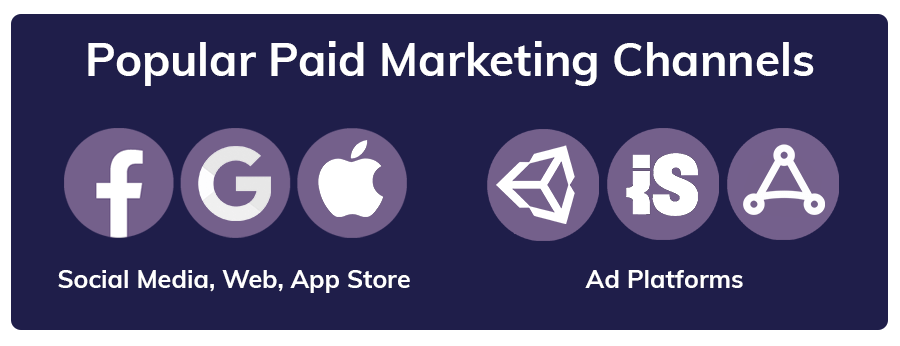
Facebook ads
Facebook ads are one of the most popular paid advertising channels. Users can target specific demographics such as age, location, interests, and behaviors to reach a relevant audience. Additionally, marketers can optimize their Facebook campaign based on metrics such as cost per install (CPI), cost per click (CPC), and cost per thousand impressions (CPM).
Google Adwords and Universal App Campaigns
Google ads are another of the most popular paid advertising channels on the internet. Marketers can use this platform to target specific demographics, promote apps through search results, and optimize campaigns based on metrics such as cost per install (CPI), cost per click (CPC), and cost per thousand impressions (CPM).
Apple Search Ads
Apple Search Ads is another popular advertising channel – especially for anyone who has an app in Apple’s App Store. This channel allows you to get in front of users who are searching for games like yours. Just make sure you are doing your due diligence on keyword research to ensure you’re getting the best return on ad spend (ROAS).
Mobile game ad networks
Gaming advertising platforms allow developers to target gamers who might be interested in their particular game. There are a number of different gaming advertising platforms available, each with its own set of features and benefits. Some of the most popular gaming advertising platforms include:
Unity Ads
Unity Ads is a gaming-focused ad network that allows developers to target gamers based on their location, age, and interests. Additionally, developers can use Unity Ads to measure user engagement and optimize campaigns accordingly.
ironSource Ads
ironSource prides itself on scaling user growth, as well as providing effective monetization, robust analytics, and creative management. They offer various high-impact ad formats such as rewarded video and interstitials. They provide tools for A/B testing monetization and in-app bidding. They also provide publishing services for mobile games.
AppLovin Ads
AppLovin allows mobile game developers to target users around the world – with a focus on automation. Developers can automatically optimize campaigns based on return on ad spend (ROAS), cost per engagement (CPE), or cost per purchase (CPP) KPIs.
Demand-Side Platforms (DSP)
Demand-side platforms (DSPs) help advertisers automate the process of buying ad space. Some examples of demand-side platforms include Google Marketing Platform, Smadex, MediaMath, and Amazon DSP.
Influencer marketing
Influencer marketing involves the use of social media personalities to spread the word about your mobile game. It’s distinct from social media as a paid or organic channel because you are working through partners who manage their own social media pages rather than purchasing social media ad space through the platform or running your own social media page. Influencer marketing can be an effective tool, but it’s important to find the right fit – and measuring efficacy can be a bit opaque.
In-game events
In-game events are a great way to promote your game and engage both new and existing players. They offer unique stories, quests, gameplay elements, and in-game items that are available for a limited time. These events can be used to drive sales of in-game items or to encourage users to come back to the game after a period of inactivity.
In order to create an effective in-game event, you need to plan carefully and make sure that all the details are taken care of. The following tips will help you create an event that is both successful and engaging:
Planning: The first step in creating an in-game event is planning out the details. This includes deciding on the theme of the event, what content will be available, what rewards players can earn, and how long the event will run.
Creativity: In order to stand out from other games, it’s important to make your in-game event creative and engaging. This could involve telling a story through the event, adding new gameplay elements, or offering exclusive rewards that can’t be obtained anywhere else.
Promotion: Once your event is planned out, it’s important to start promoting it well ahead of time. This could involve posting about it on social media, sending out press releases, or even advertising it on gaming websites and forums.
Customer support: Make sure that you have enough customer support staff available to handle any questions or problems that players may have during the event. Even better, make sure you have support available for any new players or those interested in more details about your game.
Localization
Localization is the process of tailoring a game to the specific cultural and linguistic preferences of a target market. This is important in mobile gaming because, with such a high level of market saturation, tailoring a game to specific, even niche, regions is the key to succeeding in different geos and, therefore, succeeding overall.
Best practices for mobile game marketing
Growth marketing has played a large role in growing mobile games into the juggernaut industry it has become. Many of the insights and disciplines learned over the years have gone on to be adopted by others in the mobile space and beyond. Here is a look at some of these industry-spanning best practices to help you with your next growth hack.
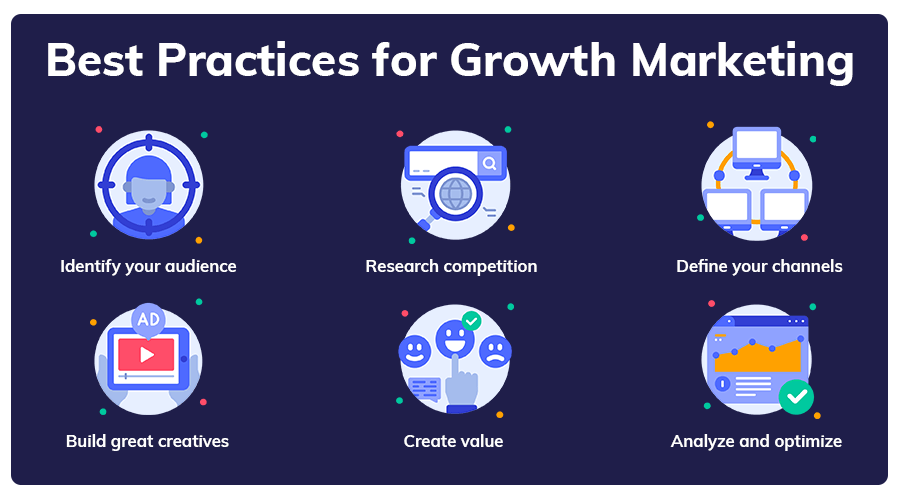
Identify your target audience
The first step in any growth marketing strategy is identifying your target audience. For a mobile game, this means understanding who your game appeals to and what motivates them to play the game. Is your game for young players? Is your game intended for people that like to play alone? Those that like to compete with others?
Gamers are as diverse as the titles from which they can choose. Some are highly competitive and care a great deal about quantifying their play with a score or leaderboard. Others are interested in camaraderie or a shared experience.
It is critical to identify and locate the best possible players for the experience your game will deliver. Once you have identified your target audience, you can begin tailoring your marketing efforts to appeal to their interests, wants, budgets, and habits.
Research your competition
Before you can start driving growth for your app, you need to understand what you’re up against. Researching your competition will give you a better understanding of the market landscape and help you identify opportunities for marketing your mobile game.
If there is a popular game that you compete with, perhaps you can position yourself as an alternative or something new. Without understanding what you are competing against, however, it will be difficult to create a marketing message that lands with potential players.
Create a strong value proposition
Your mobile game needs to offer something unique that sets it apart from the competition. Whether it’s a new take on an existing concept or a completely innovative idea, your app must have a strong value proposition that will appeal to your target audience.
Define your acquisition channels
There are a number of ways to market your app and reach potential users. You need to identify which channels will work best for acquiring new users based on your target audience, budget, and marketing goals.
Design an effective user acquisition strategy
Once you’ve identified your target audience and acquisition channels, you can start putting together a user acquisition strategy. This should include detailed plans for how you will reach potential users and what message you will use to encourage them to download your app.
Optimize your app for discoverability
Make sure your app is optimized for search engines and the different app stores it is listed in so that potential users can easily find it. This includes having an organic mobile marketing strategy, creating an attractive message, and providing high-quality screenshots and videos.
Build stellar advertising creatives
To maximize your ROAS, it’s important to have stellar creatives that stand out from the crowd. Here is a look at some of the most popular ad formats and their associated best practices.
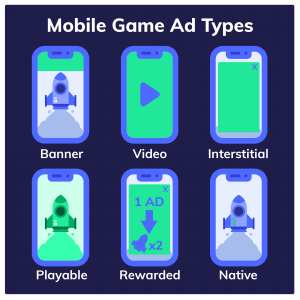
Video ads and rewarded video ads
Video ads are among the most popular ad formats because they are more engaging than static ads and tend to convert better. Some good rules of thumbs for video ads are to study competitor ads, include gameplay footage, keep them between 15-30 seconds, include captions, and start with an eye-catching opener.
Rewarded video ads are a subset of video ads where mobile gamers within a game are rewarded with in-game currency or items for watching a video ad. These are among the most effective ads because they are opt-in and allow for a “captured” audience experience.
Playable ads
Playable ads allow ad viewers to sample your gameplay within an ad unit. These can be great for conversion as someone who has enjoyed playing your game is much more likely to purchase and/or download it.
Make sure you are putting your best foot forward if you make a playable ad. You don’t want people to have a buggy or underwhelming experience. Feature an exciting game moment with mechanics that are easy to understand but also set you apart from other games. Would-be players should walk away with a feeling of accomplishment.
Static ads
Static ads are simply ads that feature pictures or graphics, rather than video or gameplay. These often include banner ads and interstitial ads in games. When it comes to images, as with most ads, simple is best. Feature your main message in big letters alongside your branding, and a CTA – all encompassed by a compelling visual.
Additionally, you will want to tailor your ads to the standards of whatever platform you’re releasing them on. These can change fairly regularly – and different on the mobile and web versions of the platform – so make sure to look up the latest standards of the platforms you’re using.
Native ads
Native ads are ads that blend seamlessly into the surrounding environment and don’t look much like an ad at all. Product placements are great examples of native advertising. More examples of native ads include an in-game billboard ad or radio ad for a real out-of-game product or service.
Search ads
Search ads, such as an Apple Search ad or a Google Search ad, are text ads that show up at the top of relevant search results. While they look like other search results, they are typically marked as ads in order to be fully transparent to users. However, they are an effective way of getting seen by people who are actively looking for games like yours.
Analyze and optimize your results
Monitor your acquisition efforts to see what’s working and what isn’t. Use data and analytics to constantly optimize your strategy and improve your results over time. Free tools like Google Analytics can be a great starting point for understanding your web traffic – which you can use to help inform your mobile app marketing strategies.
Key takeaways
Growth marketing is a strategy meant for driving user acquisition, engagement, and retention. Success is not always guaranteed in the world of mobile game marketing, but you can improve your chances of success by following the steps above.
Remember, a part of growth marketing is to learn from mistakes, so don’t be discouraged by preliminary results. If you need a hand, Upptic specializes in mobile game growth marketing with a focus on User Acquisition, Analytics & Data, and Creative Production.
Get in touch with us to discuss your next growth marketing strategy!

